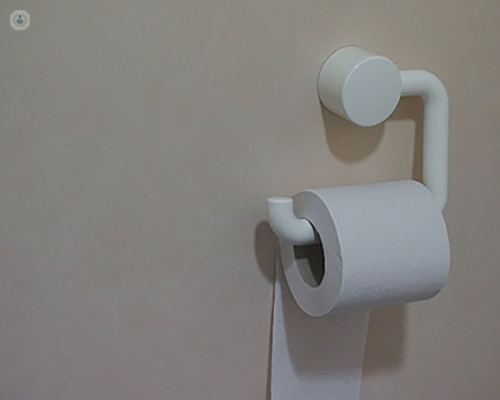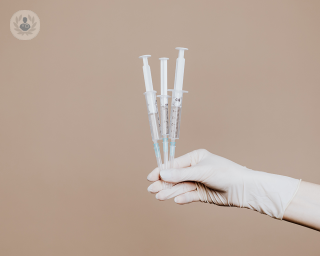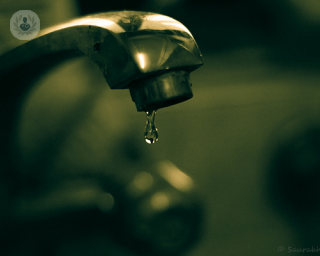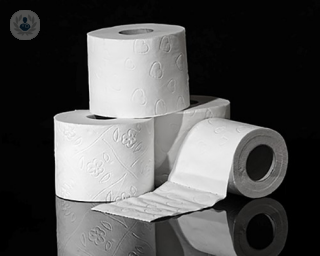Urinary incontinence
Miss Marie-Klaire Farrugia - Paediatric urology
Created on: 11-13-2012
Updated on: 10-13-2023
Edited by: Kate Forristal
What is urinary incontinence?
Urinary incontinence is the involuntary loss of urine. This is a common problem which causes embarrassment and can significantly affect quality of life. It is more common with ageing, but can occur at any stage of life. It affects both men and women. Normal continence relies on working nerves and muscles of the bladder (the storage area of urine) and urethra (the outlet pipe) coordinating their action together.
If you're suffering from urinary incontinence, you should see a urologist.

What are the symptoms of urinary incontinence?
The symptoms can vary from a small leak of urine to much greater volumes. The different types of urinary incontinence are:
- Urge incontinence – a sudden urge to urinate with a sudden loss of bladder control and urinary leakage. This is commonly caused by what is referred to as an “overactive bladder”.
- Stress incontinence – urine leaks when pressure is placed on the bladder (e.g. sneezing, coughing, laughing, running or lifting).
- Overflow incontinence – a constant dribbling or urine related to a bladder that is overfull and has lost the ability to empty adequately. This type of urinary loss may also occur when there is an abnormal connection between the bladder or urethra and other areas (a “fistula”).
- Mixed incontinence – you can experience more than one type of urinary incontinence.
If you experience bladder incontinence, you should see a specialist as it could be indicative of an underlying health problem, and it can be managed to improve your quality of life and overall confidence.
What causes urinary incontinence?
Most control problems occur because the muscles that hold the bladder and urethra are too weak or too active. If the urethral muscles are weakened, small amounts of urine are lost when performing actions such as laughing or coughing. However, urinary incontinence can also be a symptom of either an underlying medical condition, lifestyle factors or physical problems. The type and amount of fluid we drink, including caffeine and alcohol, as well as body mass, medications, constipation and urinary tract infections are amongst many of the other important factors that may affect the occurrence of urinary incontinence.
Other key factors in urinary incontinence are:
- Pregnancy – the pregnant uterus can put pressure on the bladder.
- Childbirth – this can weaken the muscles needed for bladder control and damage bladder nerves and tissues.
- Ageing – as we age, we become less efficient at storing urine.
- Surgery – pelvic floor muscles or nerves may be damaged during operations.
- Enlarged prostate in men – this obstructs the bladder, meaning it cannot empty properly.
- Prostate cancer – either as a side effect of prostate cancer treatment, or a symptom.
- Neurological disorders – some disorders can interfere with nerve signals that are needed for bladder control (e.g. Parkinson’s disease, multiple sclerosis).
- Chronic cough – this puts ongoing pressure on the bladder, and is similar to conditions where there is chronic straining.
- Obesity – puts pressure on your bladder.
Can urinary incontinence be prevented?
Urinary incontinence is a problem that cannot always be prevented, but the following can reduce your risk of developing this problem:
- Maintaining a healthy weight
- Avoid consuming things that irritate the bladder (e.g. alcohol, acidic foods and caffeine)
- Stop smoking
- Doing pelvic floor exercises
- Avoid constipation
What is the treatment for urinary incontinence?
Treatment will depend on the type and cause of your urinary incontinence. Some types can be managed with lifestyle changes (e.g. weight loss or cutting out caffeine), bladder training (learning to wait longer to urinate, guided by a specialist) or pelvic floor exercises (to strengthen the pelvic floor muscles, best guided by a specialist).
The following can also help to manage urinary incontinence:
- Incontinence products (e.g. absorbent pads)
- Medications (there are many different types, chiefly for an overactive bladder, and have benefits as well as side effects)
- Electrical stimulation (electrodes inserted into the vagina or rectum stimulate and strengthen the pelvic floor muscles - these are often best advised by a specialist)
- Support devices – there are some pessaries that may be temporarily inserted into the vagina that some women find beneficial. There are also some removable devices that men and women use within the outlet pipe (urethra).
You may be offered surgery if other treatments have been unsuccessful or unsuitable. The type of surgery will depend on your type of urinary incontinence:
- Sling procedures – a sling is placed around the neck of the bladder to give support and to prevent leaks. In the United Kingdom, this sling can no longer be made from synthetic materials but rather a small amount of your own tissue is used (“rectus facial sling”).
- Colposuspension – the neck of the bladder is lifted in position to prevent leaks in women with stress incontinence. This operation can be done by keyhole surgery.
- Urethral bulking agents – a substance is injected into the walls of the urethra so that they increase in size, lessening leakages as the urethra is better able to stay closed.
- Artificial urinary sphincter – an artificial urinary sphincter is fitted to stop incontinence. This is the most complex of surgeries and is usually reserved as a final surgical option.
















